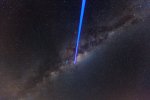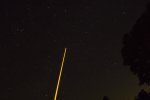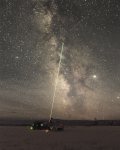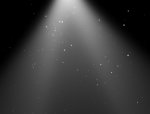MEDDER
New member
- Joined
- Dec 20, 2018
- Messages
- 27
- Points
- 3
I do astrophotography and have a huge fascination with adaptive optics and laser guide stars. I have a basic tip/tilt adaptive optics module on my telescope. But what grinds my gears as well as million dollar observatories, is when there is not a bright enough star in the guide camera's fov to get any benefits from the adaptive optics. Turn towards laser guide stars (LGS).
So now to the diy side of it, I am interested in building a rudimentary laser guide star. I have learned a fair bit of the process behind them but I am stuck at the actual laser side of it. Specifically type and output power (budget). There are two types of LGS, one being Rayleigh scattering and the other is sodium. Sodium you have a 589.2nm beam that then interacts with a layer of sodium atoms in the mesosphere, it glows and looks like a star. However the latter is much more complicated both in terms of the physics getting the sodium atoms to illuminate as well as building a 589nm laser.
So Rayleigh it is. You can use whatever wavelength you want but green is the most common because it provides a good middle ground with atmospheric scattering and camera wavelength sensitivity. With my specific camera sensor it would be best somewhere between 440nm-540nm. There are a handful of options I could use, from basic green/blue diodes to argon to a frequency doubled Nd:Yag. In terms of power they use 20W-30W lasers, but they are also taking around 1000 exposures a second so they need something pretty bright. My camera on the other hand maxes out with on roughly 20 fps so I can take significantly longer exposures, typically 0.05-0.1 seconds, which in turn means my guide "star" does not need to be nearly as bright. I am going to guess the absolute minimum I can get away with is 5w but would be pretty happy if I could do 12W.
To sum up the reason I am here, whats the best bang for your buck 420-520nm laser. Also to be clear, I wont be using this as an actual tool for astrophotography like the big observatories. I just want to build a 'proof of concept/working prototype' sort of thing. Sorry if parts of this are confusing, I am terriblw at writing thread starters. Here are a couple links that might be helpful.

 www.rp-photonics.com
www.rp-photonics.com
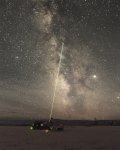
So now to the diy side of it, I am interested in building a rudimentary laser guide star. I have learned a fair bit of the process behind them but I am stuck at the actual laser side of it. Specifically type and output power (budget). There are two types of LGS, one being Rayleigh scattering and the other is sodium. Sodium you have a 589.2nm beam that then interacts with a layer of sodium atoms in the mesosphere, it glows and looks like a star. However the latter is much more complicated both in terms of the physics getting the sodium atoms to illuminate as well as building a 589nm laser.
So Rayleigh it is. You can use whatever wavelength you want but green is the most common because it provides a good middle ground with atmospheric scattering and camera wavelength sensitivity. With my specific camera sensor it would be best somewhere between 440nm-540nm. There are a handful of options I could use, from basic green/blue diodes to argon to a frequency doubled Nd:Yag. In terms of power they use 20W-30W lasers, but they are also taking around 1000 exposures a second so they need something pretty bright. My camera on the other hand maxes out with on roughly 20 fps so I can take significantly longer exposures, typically 0.05-0.1 seconds, which in turn means my guide "star" does not need to be nearly as bright. I am going to guess the absolute minimum I can get away with is 5w but would be pretty happy if I could do 12W.
To sum up the reason I am here, whats the best bang for your buck 420-520nm laser. Also to be clear, I wont be using this as an actual tool for astrophotography like the big observatories. I just want to build a 'proof of concept/working prototype' sort of thing. Sorry if parts of this are confusing, I am terriblw at writing thread starters. Here are a couple links that might be helpful.

laser guide stars
Laser guide stars are bright spots generated with laser beams for adaptive optics imaging in astronomy, mitigating atmospheric effects.
Radware Bot Manager Captcha
iopscience.iop.org





